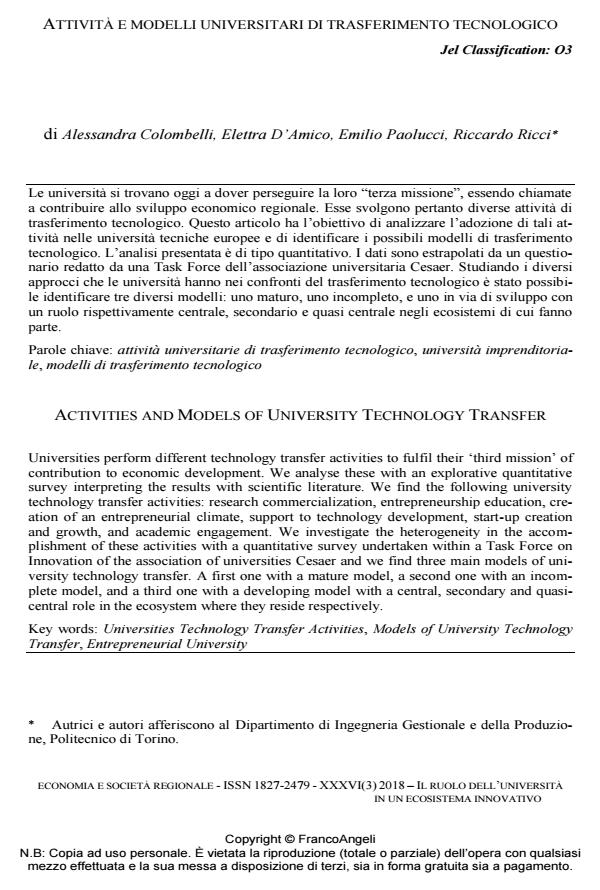Attività e modelli universitari di trasferimento tecnologico
Titolo Rivista ECONOMIA E SOCIETÀ REGIONALE
Autori/Curatori Alessandra Colombelli, Elettra D’Amico, Emilio Paolucci, Riccardo Ricci
Anno di pubblicazione 2018 Fascicolo 2018/3
Lingua Italiano Numero pagine 18 P. 10-27 Dimensione file 409 KB
DOI 10.3280/ES2018-003002
Il DOI è il codice a barre della proprietà intellettuale: per saperne di più
clicca qui
Qui sotto puoi vedere in anteprima la prima pagina di questo articolo.
Se questo articolo ti interessa, lo puoi acquistare (e scaricare in formato pdf) seguendo le facili indicazioni per acquistare il download credit. Acquista Download Credits per scaricare questo Articolo in formato PDF

FrancoAngeli è membro della Publishers International Linking Association, Inc (PILA)associazione indipendente e non profit per facilitare (attraverso i servizi tecnologici implementati da CrossRef.org) l’accesso degli studiosi ai contenuti digitali nelle pubblicazioni professionali e scientifiche
Le università si trovano oggi a dover perseguire la loro "terza missione", essendo chiamate a contribuire allo sviluppo economico regionale. Esse svolgono pertanto diverse attività di trasferimento tecnologico. Questo articolo ha l’obiettivo di analizzare l’adozione di tali attività nelle università tecniche europee e di identificare i possibili modelli di trasferimento tecnologico. L’analisi presentata è di tipo quantitativo. I dati sono estrapolati da un questionario redatto da una Task Force dell’associazione universitaria Cesaer. Studiando i diversi approcci che le università hanno nei confronti del trasferimento tecnologico è stato possibile identificare tre diversi modelli: uno maturo, uno incompleto, e uno in via di sviluppo con un ruolo rispettivamente centrale, secondario e quasi centrale negli ecosistemi di cui fanno parte.
Parole chiave:Attività universitarie di trasferimento tecnologico, università imprenditoriale, modelli di trasferimento tecnologico
Alessandra Colombelli, Elettra D’Amico, Emilio Paolucci, Riccardo Ricci, Attività e modelli universitari di trasferimento tecnologico in "ECONOMIA E SOCIETÀ REGIONALE " 3/2018, pp 10-27, DOI: 10.3280/ES2018-003002